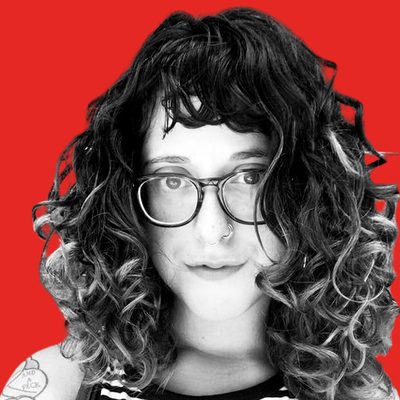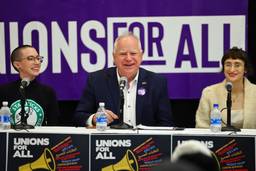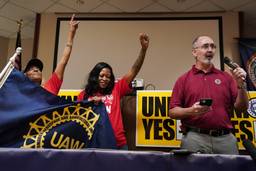
In Philadelphia, single mothers and their children have moved into abandoned, publicly owned buildings, in the most significant housing take over in the country — at a time when millions have lost their jobs and the country is on the brink of another housing crisis. Jennifer Bennetch has helped place unhoused people into vacant homes owned by the Philadelphia Housing Authority (PHA), as the founder of Occupy PHA and a member of the Philadelphia Housing Action coalition. She’s doing what she says is “the government’s job to make sure people who need it have housing.” So far, Bennetch and other organizers have housed over 40 people by occupying 11 homes, all owned by the authority whose responsibility it is to match people with public housing. Bennetch says that the families have no intention of leaving, and organizers are currently negotiating with the city to come to a resolution. Elsewhere in the city, unhoused people have escalated their demands for the right to housing by creating two protest encampments, one in front of PHA headquarters and the other in the middle of Center City.
Eeg Stremist, a mother of eight, was born and raised in North Philadelphia, where she’s now living in a previously-vacant home owned by PHA. A friend told her that she could get her into public housing, but Stremist thought she meant that she would be expedited off the waiting list. When she realized that her friend actually meant she could help her move into an empty home, Stremist hesitated, but decided to move forward. After all, a house would mean that she could finally live with all of her children, some of whom she had been separated from during the last three years. The house was dirty and dusty — Stremist and her kids spent the first day cleaning one room, where they all slept. The next day, they tackled another, and then another. Although Stremist isn’t paying rent, she’s purchased paint, tiles and cleaning supplies to fix up the house, and spent hours making it feel like a home. “The house I’m in was marked as unviable,” Stremist said, “but it doesn’t look like it to me.”
Stremist had spent the last three years moving from shelter to shelter. Even when she had enough money to rent a place, she was consistently rejected, either because her credit was bad, or because she was told she had too many kids. Now, as the Covid pandemic and its consequences — unemployment, loss of health insurance, potential eviction — have continued to wreak havoc on working people, especially those who were already struggling to stay afloat before the virus stunted the economy, people with insecure housing are not willing to wait around. Unhoused people — who may live in shelters or on the street, or bounce from couch to couch — are some of the most vulnerable to Covid. After all, you can’t quarantine without a home. As the weather gets hotter and workers’ unemployment checks run out, more and more people will be at risk of eviction or foreclosure once states’ and cities’ moratoriums end. And without enough public housing to act as a safety net for those who need it, more and more people will either join encampments or find their own housing by squatting in empty buildings.
Although it’s PHA’s sole job to provide housing for those who need it, the authority has been under fire by activists in recent years for being ineffective. While it is the biggest landlord in the state (and has 80,000 tenants in the city), there are still more than 40,000 people on the housing waitlist, according to Bennetch, and it has been closed to new applicants since 2013. Many of those on the waiting list have to wait up to 13 years to get housing.
In recent years, the housing authority’s projects have included more market-rate housing, which is unaffordable for those eligible for public housing, and potentially takes housing from those who really need it. And while thousands of Philadelphians languish for years on the waitlist, PHA sells lots and structures to private developers who build market-rate housing, and let other houses sit empty and decay. Stremist doesn’t know why there are so many vacant houses, and told In These Times that “it’s a bureaucracy thing, or else I can’t explain it.” Activists have been organizing to change PHA, citing its role in gentrification, as well as its use of eminent domain and aggressive private police. The housing authority has denounced the squatters, and called their occupation a “health and safety risk.” But so is living in a shelter or on the streets during a pandemic. The authority built a new $45 million headquarters last year, and Kelvin Jeremiah, the CEO, made nearly $300,000 in 2018.
Philadelphia’s homeownership rate is 53%, which is higher than similarly sized cities across the country. The city is often lauded for its affordable rent — compared to cities like New York, Washington, D.C., and Boston — but one in 14 renters still has eviction notices filed against them. Philadelphia is the poorest big city in the country, with a poverty rate of 25% and a deep poverty rate of 14%, and it’s impossible to stretch a dollar you don’t have. The Covid pandemic has pushed those already teetering on the edge of stability into total disarray, and houseless people have had no respite from it. But according to Sterling Johnson, an organizer with The Black and Brown Workers Cooperative and Philadelphia Housing Action, houselessness “was a public health issue before Covid.”
As single moms and their kids fix up their new houses, others have camped out in front of PHA headquarters and a boulevard that runs through Center City. Johnson said that both encampments were created after long-standing encampments elsewhere in the city were evicted. (CDC guidelines suggest that encampments should not be evicted during the pandemic, but on March 23 the city evicted an encampment outside the convention center.) Those evictions, coupled with the urgency of the pandemic and lack of movement from the city, forced unhoused people to take matters into their own hands by creating the encampments and squatting in abandoned buildings. The new encampments are not just housing, but purposeful protests against the way unhoused and housing-insecure people are treated in Philadelphia. The organizers’ demands include an emergency transfer of all city-owned, vacant properties into a community land trust, legal recognition of the encampments, and an end to both homeless sweeps and the sale of publicly-owned properties to private developers. They also echo the call heard at many protests around George Floyd’s murder to disband the Philadelphia police department.
According to Sterling, unhoused people go through many of the same dehumanizing experiences as Black people across the country: surveillance, harassment, and being “stopped and frisked” and questioned just for their very existence. The purpose of the encampments is to house people, but to also create a space where “they are treated with dignity, like they have the right to exist,” says Sterling. And because 75% of unhoused people in Philadelphia are Black, the relationship between the Black Lives Matter movement and the right to housing are inextricably linked.
Organizers met with Mayor Jim Kenney and PHA CEO Kelvin Jeremiah on July 20. According to Bennetch, the meeting went better than expected, and “the Mayor seems open to moving forward with some of our ideas to deal with the housing crisis.” But she said that Jeremiah, on the other hand, is not: Bennetch says that, during the meeting, Jeremiah sent PHA police to intimidate those using PHA houses. (The houses that were raided were from a separate occupation.)
Although Bennetch got a “cease and desist” letter and was threatened to be charged with felony criminal trespassing for assisting with the occupation, she believes that, ultimately, the families will be able to stay in the homes. A lawyer has stepped up and offered to represent the families, which have also been supported by housing and homeless activists across the city. Bennetch says that “PHA is in the spotlight right now and they know better than dragging women and their children out of their homes.” Stremist, on the other hand, isn’t sure whether she’ll be able to stay in her new home, and hasn’t allowed herself to get too comfortable: “My life isn’t stable yet, because the house isn’t mine.”
Mayor Kenney told the Philadelphia Inquirer that organizers’ “motives are sincere — they want to see people housed.” After a disastrous few months for the city — including the tear-gassing of peaceful protests — organizers won’t accept platitudes. And the Mayor is right: They want to see people housed. As of 2010, there were over 40,000 vacant lots in the city, 3,000 of which include buildings — plenty of room to start housing the nearly 6,000 unhoused people (including 1,000 who are unsheltered), according to organizers. The city says that roughly 25% of these vacant lots are publicly owned, meaning that there are around 10,000 lots that could be used for public housing as soon as possible. Bennetch believes that the vacant properties attract crime and contribute to blighted neighborhoods, and says that “there’s no reason that taxpayer-funded housing that is supposed to be public housing just sits empty when so many people need homes.” Dickerson, who has been on PHA’s public housing waiting list for five years now, agrees: “If you make 700 bucks a month, there’s nowhere you can live in Philadelphia” without help from the city or the state.
While there’s been some temporary municipal and state-wide relief for renters, there’s been no legislation that actually forgives rent or mortgage payments during the pandemic. Bennetch believes that “the city knows that when courts open back up, there’s going to be a way bigger problem than what we have now. People’s landlords are already trying to evict them illegally now.” With the pandemic and its economic reverberations ongoing, mass evictions and foreclosures are likely, meaning more people could join encampments like these. As Dickerson put it, “If I could afford my own place, I couldn’t afford to eat.”








